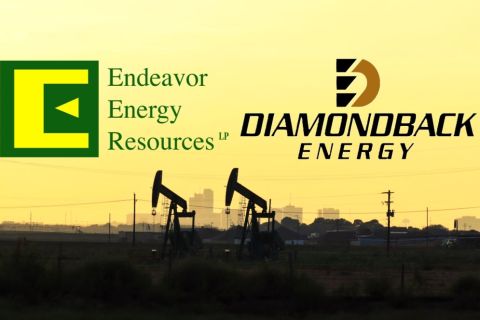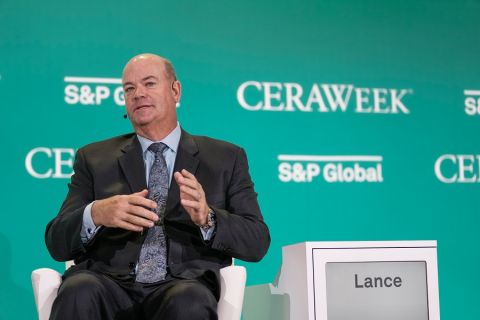
The School of Mines counts among several leading petroleum engineering universities addressing the need for sound CCUS science. (Source: Shutterstock)
After the initial flurry of projects by both producers and midstream operators in carbon capture, utilization and sequestration (CCUS), and then the flush of energy transition incentives in the federal Inflation Reduction Act, the industry is at an inflection point.
Having made the determination to proceed with CCUS, executives are seeking clarity both on how best to get that done and how to move through federal permitting.
Industry has always been innovative about solving its own technical challenges. But the complications for building comprehensive CCUS get quickly outside the fence line.
For example, midstream companies have faced local resistance to constructing new CO2 pipelines or injection sites, or even to the reconfiguration of existing lines. Permitting for CO2 capture and sequestration has been as frustratingly slow. Political opposition from both the left and right has proven surprising.
“The challenges with energy transition are complex, and it will be difficult to develop solutions unless we view them from a systems perspective across industries, government and academia,” said John Bradford, professor of geophysics and vice president for global initiatives at the Colorado School of Mines.
“The social challenges are at least as significant as the technical ones,” he emphasized.
Poor assumptions
Key decision makers must do away with poor energy transition assumptions.
For instance, industrial mining plays a much bigger role in the transition than most people realize. In order to create the infrastructure necessary to meet greenhouse-gas goals by 2050, the world will need to produce as much copper in the next 25 years as has been produced in all of human history, Bradford said. Mining already accounts for 10% of global emissions, as well as waste water and hazardous materials. The story is similar for other critical materials, such as nickel, lithium and rare earth minerals.
“Nothing comes for free,” Bradford said. “There are emissions from producing critical minerals. There is a cost to increase production. At the highest levels, the questions being asked are not the correct ones.
“It’s not, ‘How can we shift from hydrocarbons to green energy as quickly as possible?’ Rather it’s, ‘How can we stop emitting greenhouse gases?’ What matters is eliminating greenhouse-gas emissions with optimal economics and social benefit.”
That does not mean that meaningful things cannot be done quickly. If all the coal-fired power plants in the world were switched to natural gas, that would reduce their emissions by 60%, he said. The point is though that sometimes the cleaner solutions—at least in the shorter term—rely on oil or gas. “The carbon has to be managed.”
The School of Mines counts among several leading petroleum engineering universities addressing the need for both sound CCUS science and a next generation of leaders who will carry the industry through the energy transition. Mines had the first graduate-level certification program in CCUS, which is completely online and therefore open to anyone, anywhere.
Specifically addressing the hurdles the energy industry has encountered in permitting, Jessica Smith, professor in the engineering, design and society department at Mines, stressed that the goal in planning CCUS development is not just to minimize harm, but to benefit all stakeholders.
For example, the technically ideal route for a pipeline might be to follow the contour lines of the landscape, but that could put the line into conflict with communities or environmentally sensitive areas. A little more effort spent on design and construction can save time and money by minimizing opposition and litigation.
“The goal is to get the project done, and the best way to do that is not to create flashpoints,” Smith said.
Solutions through education
The energy transition broadly, and CCUS specifically, is as much a social dilemma as it is a technical challenge, agreed Manika Prasad, professor of geophysics at Mines, director of the CCUS Innovation Center and co-director of the Center for Rock & Fluid Multiphysics.
“We are trying to determine how to proceed in the face of a growing public sentiment that questions the science,” she said. “Or, rather, questions if there is an agenda behind the science.”
And with developing commercial CCUS, there is also the question of equity, Prasad said. To whom do we ascribe the carbon in the atmosphere today? Where do we store it? Who is responsible for doing that, and who is responsible for paying for it?”
That is where industry has a key role. “They come here and give a talk or a seminar,” Prasad said, “but, so far, not much funding for research. They are still on the fence. But research is not just the job of the university; it is the job of everyone, including industry. That is the mandate for management.”
Mines has three areas of focus for CCUS, said Bradford. The largest area is, of course, geological storage. Then, there is a focus on innovative materials for point-source capture, as well as on many different types of utilization. For example, circular fuels, in which CO2 is captured by algae that are then turned into fuels, he said. Different types of algae can be used in 3D printing as a substitute for wood. But, growing algae in large ponds requires land. “Nothing comes for free.”
Another promising area for CCUS is concrete. Carbon can be sequestered in the concrete mixture by replacing gravel with biochar. Cement production generates about 10% of global CO2, Bradford said.
“We could sequester half of the carbon in the concrete itself. Also, concrete absorbs CO2 over its lifetime,” he said. “If we can capture 20% of the CO2 at the point source, we’re pretty close to carbon-neutral concrete.”
Recommended Reading
Analysts: Diamondback-Endeavor Deal Creates New Permian Super Independent
2024-02-12 - The tie-up between Diamondback Energy and Endeavor Energy—two of the Permian’s top oil producers—is expected to create a new “super-independent” E&P with a market value north of $50 billion.
Which Haynesville E&Ps Might Bid for Tellurian’s Upstream Assets?
2024-02-12 - As Haynesville E&Ps look to add scale and get ahead of growing LNG export capacity, Tellurian’s Louisiana assets are expected to fetch strong competition, according to Energy Advisors Group.
EIA: E&P Dealmaking Activity Soars to $234 Billion in ‘23
2024-03-19 - Oil and gas E&Ps spent a collective $234 billion on corporate M&A and asset acquisitions in 2023, the most in more than a decade, the U.S. Energy Information Administration reported.
Exxon Closes $60B Pioneer Deal, Reshaping Permian Basin
2024-05-03 - After facing regulatory scrutiny, Exxon Mobil closed a roughly $60 billion acquisition of Pioneer Natural Resources. The largest shale oil transaction ever signed will reshape the order of power in the vast Permian Basin oil field.
ConocoPhillips CEO Ryan Lance: Upstream M&A Wave ‘Not Done’ Yet
2024-03-19 - Dealmaking in the upstream oil and gas industry totaled $234 billion in 2023. The trend shows no signs of slowing, ConocoPhillips CEO Ryan Lance said at the CERAWeek by S&P Global conference.






